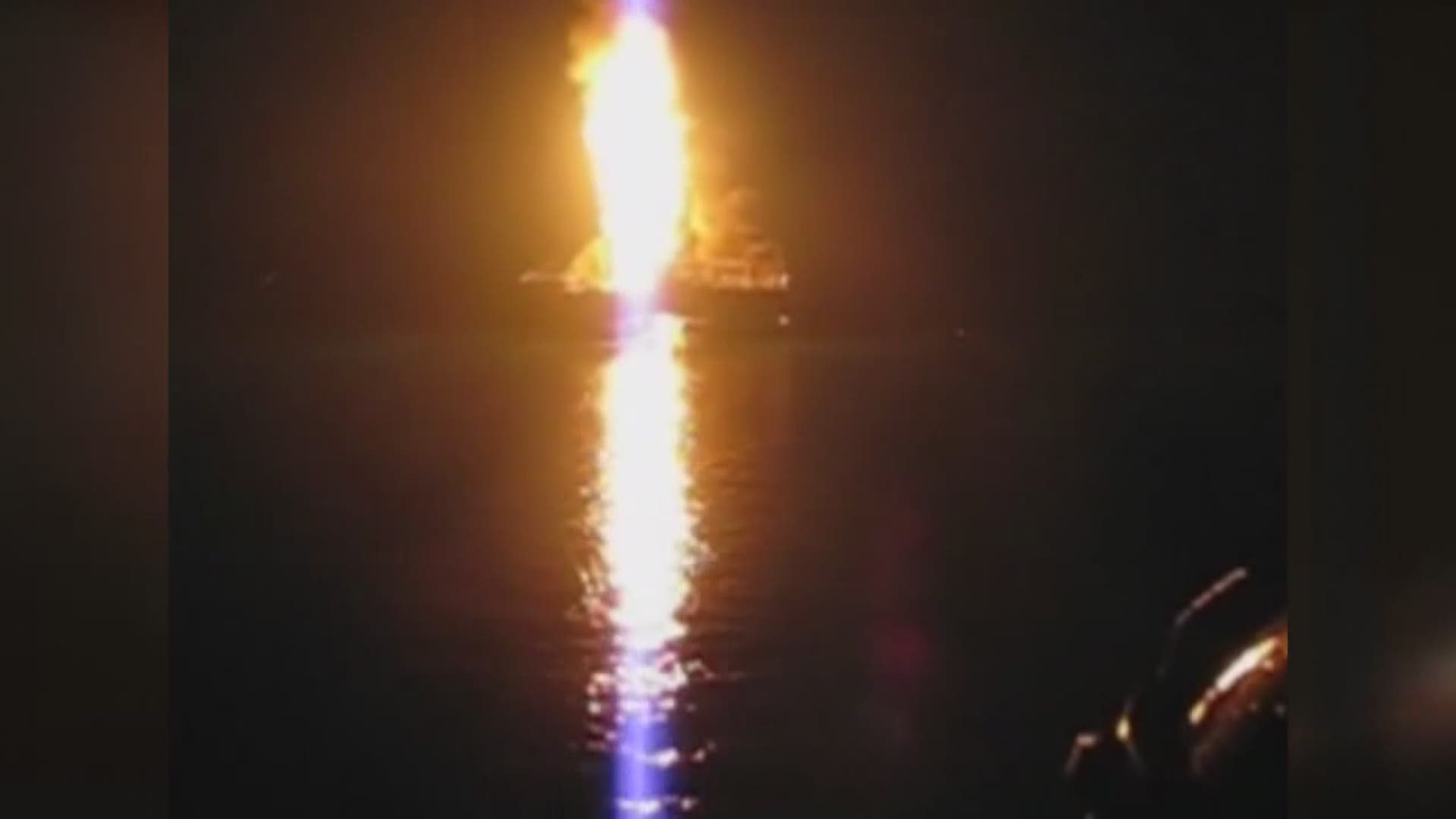NEW ORLEANS -- Like most big-budget docudramas, the newly released film “Deepwater Horizon” takes some liberties with the facts in the name of big-budget thrills.
But its portrayal of events leading up to the monster rig explosion that killed 11 men off the Louisiana coast in April 2010 and set off the worst offshore oil spill in U.S. history could leave some significant false impressions about the real-life actions of some real-life people.
“The story that’s portrayed in the movie is certainly far apart from the actual reality of what occurred,” said Scott Bickford, a New Orleans attorney who represented a victim’s family and a survivor named Mike Williams, who is the hero of the film played by Mark Wahlberg.
The movie opens and closes with footage of the actual Williams taking an oath to “tell the truth, the whole truth and nothing but the truth” at government investigative hearings. In between, it purports to be “the untold story of the brave men and women on the rig,” according to the studio, Lionsgate.
Many in the audience at the New Orleans premiere Monday were moved to audible tears and had personal connections to the harrowing incident.
The action-packed film pays homage to the victims, takes painstaking care to show the true dangers of offshore drilling and lays legitimate blame on the profit motives of the well owner, BP.
But all that fealty to authenticity by director Peter Berg and the producers only raises more questions about some of the ways the film diverges from the public record.
“I do think that any film that takes a real-life subject and dramatizes it is automatically opening itself up to scrutiny in terms of its treatment of the facts,” said Matt Brennan, a New Orleans-based film critic who extolled the film for helping him understand the basics of what went wrong on the rig.
Overall, the film’s most glaring omission is the fact that BP, the company, was convicted of manslaughter and environmental felonies and had to pay a record $4 billion fine. Even in the printed summaries of what happened at the end, BP’s culpability isn’t mentioned.
Instead, BP’s night-side rig boss, Don Vidrine, stands in for BP as the villain of the movie. He is portrayed by John Malkovich, in his usual dastardly style. The Vidrine character spends much of the film complaining about how many millions of dollars over-budget the rig’s drilling operation is and prodding the crew, supplied mostly by rig owner Transocean, to plug the hole so they can move on to the next drilling job.
“We all work very hard to ensure that those moving parts are functioning as a means to a very profitable end for all of us,” Malkovich’s Vidrine character says.
At the critical moment of the film, Vidrine brow-beats Transocean crewmembers into removing protective drilling mud from the hole they had drilled, the fateful last step in a series of errors that allowed oil and gas to spew from miles below and set off deadly explosions.
Testimony at government investigations and the trial of another BP official show a very different picture of that moment, though. While it’s true that the real Vidrine did misinterpret the last test of the well’s stability, records show he was confused about conflicting pressure readings and called his superiors in Houston.
An engineer named Mark Hafle, who refused to testify during the government investigation, told BP’s own investigators that the test may have produced false pressure readings and accepted Vidrine’s decision to accept the test as successful.
None of the shore-side engineers – BP officials who, unlike Vidrine, overtly discussed saving time and money by cutting corners in various emails unearthed by the investigations -- are ever mentioned in the movie.
In the film’s re-enactment of a real dispute between BP and Transocean over how to proceed given the troubling pressure test readings, Malkovich plays Vidrine standing at a dry-erase board, explaining to the Transocean drilling crew that something called the “bladder effect” was causing a false pressure reading in the well – a reading that, if accurate, would make it unsafe to plug the well without resealing it.
Sworn testimony actually showed the opposite: that the “bladder effect” idea, which has been scientifically debunked, was actually suggested by the Transocean crew to Vidrine as a plausible explanation for the contradictory test results.
The members of the drilling crew, 10 of the 11 men killed in the explosions, are all portrayed as victims of BP’s rush to complete the project. The federal Marine Board investigation, however, found that the drilling crew made some critical errors.
Also, a Transocean employee named Andrea Fleytas, who is portrayed in the movie by Gina Rodriguez, is shown fighting her boss to be able to sound a critical alarm when gas starts rushing into the area where the drilling crew was working. In fact, the real Andrea Fleytas testified before the Marine Board that she was overwhelmed by more than 10 magenta warning lights going off at once and failed to sound the general alarm when she had the authority to do so.
“And as a result of not sounding the general alarm a minute to 90 seconds went by where men who were in places where there was methane gas in high concentrations stayed,” Bickford said. “And those places blew up and those men died.”
There are other minor factual errors in the film, such as friendships and phone calls that didn’t really happen or the repeated depiction of gas and oil breaching the sea floor around the well before and during the blowout.
That provided a foreboding image of bubbles seeping out of the ground, reminding the viewer that trouble is brewing below, but forensic reviews of the accident found that nothing like that happened.

